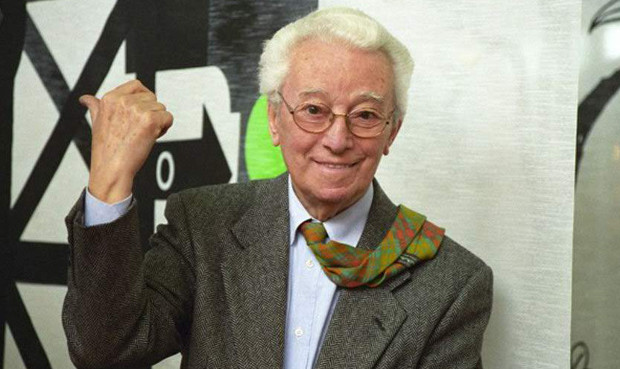
Bruno Munari was one of the most celebrated names in the twentieth century Italy in graphic designing. He was the avant-garde graphic designer and a proponent of Italian Futurist movement. It was Munari who fundamentally altered the landscape of many fields of visual arts, futurism and modernism. He is credited for his contribution to industrial design, sculpture, painting, literature, film and concrete art.
On October 24, 1907, Bruno Munari was born in Milan. Growing up he spent most of his childhood and youth in Badia Polesine. When he turned eighteen, he returned to Milan to work with his uncle. Two years later, he joined Futurist movement led by Marinetti, which showcased his works in several exhibitions. In the following years he made an association with Riccardo Castagnedi (Ricas). Until 1938, they worked together on numerous graphic designing projects. He also met some of the eminent French writers and poet of their time, Louis Aragon and André Breton. During late 1930s, Mondadori editor hired him as a graphic designer. Also, he was landed a job at the Tempo Magazine as an art director. He later applied his graphic genius to children’s books, illustrating colorful and eye-catching images.
In 1927, Munari officially associated himself with the second generation of Italian Futurist movement. It was founded by an Italian poet and editor, Filippo Tommaso Marinetti. This artistic and social movement glorified the contemporary concept of future, violence and technological advancement. It was started with the aim of liberating Italy from its anguished past by celebrating modernity and applied it in every form of visual and non-visual art (literature and music).
Munari also followed the motto dictated by the movement by contributing collages to Italian magazines. Most of them were labeled highly propagandist. The sculptural and abstract-geometrical works he created were not as valued at the time of their creation. However, the years to come would increase their worth. As his futurism inspired work was largely based on transient material, very little of it still exists. One such extant painting employing method of tempera is evident of his complete adoption of Futuristic aesthetics in his work of art. Although the Futurist movement produced noteworthy artist and artwork, it adopted Fascist attitude. Hence, Munari disengaged himself from the movement after World War II for displaying proto-Fascist values.
In the years that followed, Munari’s sculptures manifested inclination toward Constructivist aesthetic, clearly exemplified in his Aerial Machine. It was the precursor of his Useless Machines, which he first created in 1933. Useless Machines aimed to liberate tri-dimensional abstract forms as it was constructed of painted cardboards and a variety of lightweight material. During late 1940s, Munari diverted his attention from decorative abstract art to industrial design. One of his early works includes X Hour based on rotating half-disc mechanism instead of moving hands. Moreover, he investigated the Gestalt theory conducting a series of experiments which he titled as Negative Positive. Some of his industrial design products included espresso machines, ash trays, clock, toys and televisions.
The post-World-War II period is marked as height of Munari’s creativity as he experimented with several art forms employing ingenious ideas. His early experiments altered the stereotypical graphic designing and typography. Later he developed book-objects, transforming children’s books into attractive learning instruments. His books feature textured, tactile surfaces and cut-outs to make it easier for children to learn about tactile sense and color via kinesthetic learning. In the midst of Milan is claimed to be his magnum opus. At the age of 90, Bruno Munari passed away in 1998.

